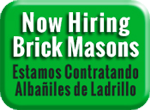How Often Should a Chimney be Swept?
Homeowners with fireplaces frequently ask our CSIA-certified chimney sweeps at Chimney Saver Solutions many common questions. Among them is this excellent enquiry: “How often should a chimney be swept?” The best, most honest answer to that question is, “It depends on which chimney you are talking about.” Several factors contribute to the timing of when a chimney needs to be cleaned. A couple of leading fire safety organizations provide pat answers. Below, in addition to standard answers, we give insights into factors that make for a cleaner or a dirtier chimney. This puts power in your hands to make a difference.
 Fire Experts Say When to Schedule Chimney Cleaning
Fire Experts Say When to Schedule Chimney Cleaning
The National Fire Protection Association (NFPA) bundles chimney cleaning with chimney inspections, saying both should be scheduled annually. The Chimney Safety Institute of America (CSIA) has more exacting advice about chimney cleaning. The CSIA says that a chimney should be swept as often as it has at least 1/8” of creosote buildup. The rest of the story is that you, the homeowner, can take certain actions that will affect how often your chimney needs to be swept.
Creosote Is the Main Culprit
The chimneys of wood-burning fireplaces need cleaning the most frequently. Creosote is a highly flammable combustion byproduct of wood fires. The primary danger is that creosote buildup increases the chances of a hazardous chimney fire. A secondary threat is that creosote can obstruct your chimney, exposing your family to toxic gases, including potentially deadly carbon monoxide.
Every wood fire results in a fresh deposit of creosote in your chimney liner. Therefore, if you frequently use your fireplace or wood stove in winter, chimney sweeping will be needed more often.
What Can Reduce Creosote Deposits?
You can take the initiative in the question of how often should a chimney be swept? For instance, there are several ways to slow down creosote buildup in your chimney, as follows:
Avoid incomplete combustion to reduce creosote buildup. Here is how: First, never burn wood with high moisture content. Wood needs to be dried out for about 6 months up to a year or more because fresh-cut wood is bursting with moisture. Use a wood thermometer to be sure the wood you are burning has a moisture content of less than 20%.
Secondly, a good chimney draft is important to avoid incomplete combustion. If there is restricted or insufficient airflow in your chimney, contact chimney experts to help you determine the cause. Potential reasons for restricted airflow include a chimney obstruction, a damper that is not fully opened, and an oversized flue.
A third strategy for avoiding incomplete combustion is to avoid small, smoldering fires. These types of fires are easy to recognize because they produce copious amounts of smoke, the same as when burning green wood.
Avoid cold chimney temperatures to reduce creosote formation. If your chimney is on an exterior wall, it may need to be primed before starting fires. This usually involves carefully creating a newspaper torch, lighting it, and holding it up toward the open damper—steps that may need to be repeated once or twice. Unburnt wood particles and volatile compounds go up the chimney and condense on cooler surfaces in the flue liner, forming creosote. If the flue liner or chimney masonry has cracks or other deterioration, the result could be that leaks of outdoor temperatures through the compromised liner are also contributing to creosote buildup.
 Contact the Professionals for Chimney Sweeping Services
Contact the Professionals for Chimney Sweeping Services
Contact Chimney Saver Solutions for annual chimney inspections. This is the best approach to determining how often should a chimney be swept? Our chimney pros can help you by cleaning your chimney, whichever of the three types of creosote you have in your chimney liner. Only one kind of creosote is easy to remove with a professional chimney sweeping brush, and the others involve the use of hardcore industry equipment. We provide a full range of chimney services, including masonry rebuilds, chimney crown repair, flashing replacement, new fireplace installations, fixes for chimney leaks, chimney cleaning, and more.
Not sure whether it is time for your chimney to be swept or repaired? Summer is the best time to schedule chimney maintenance! Call us or fill out our online form today.






